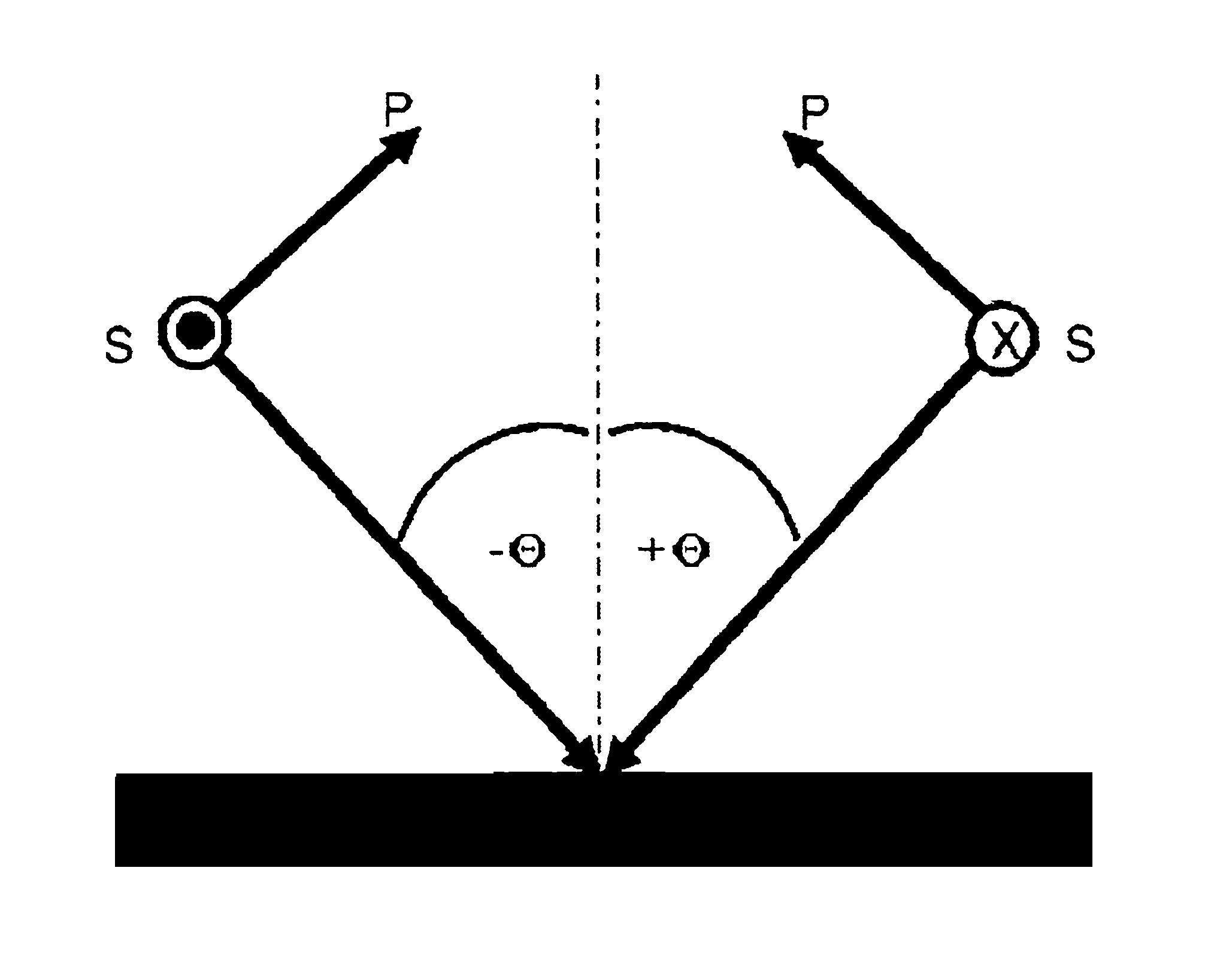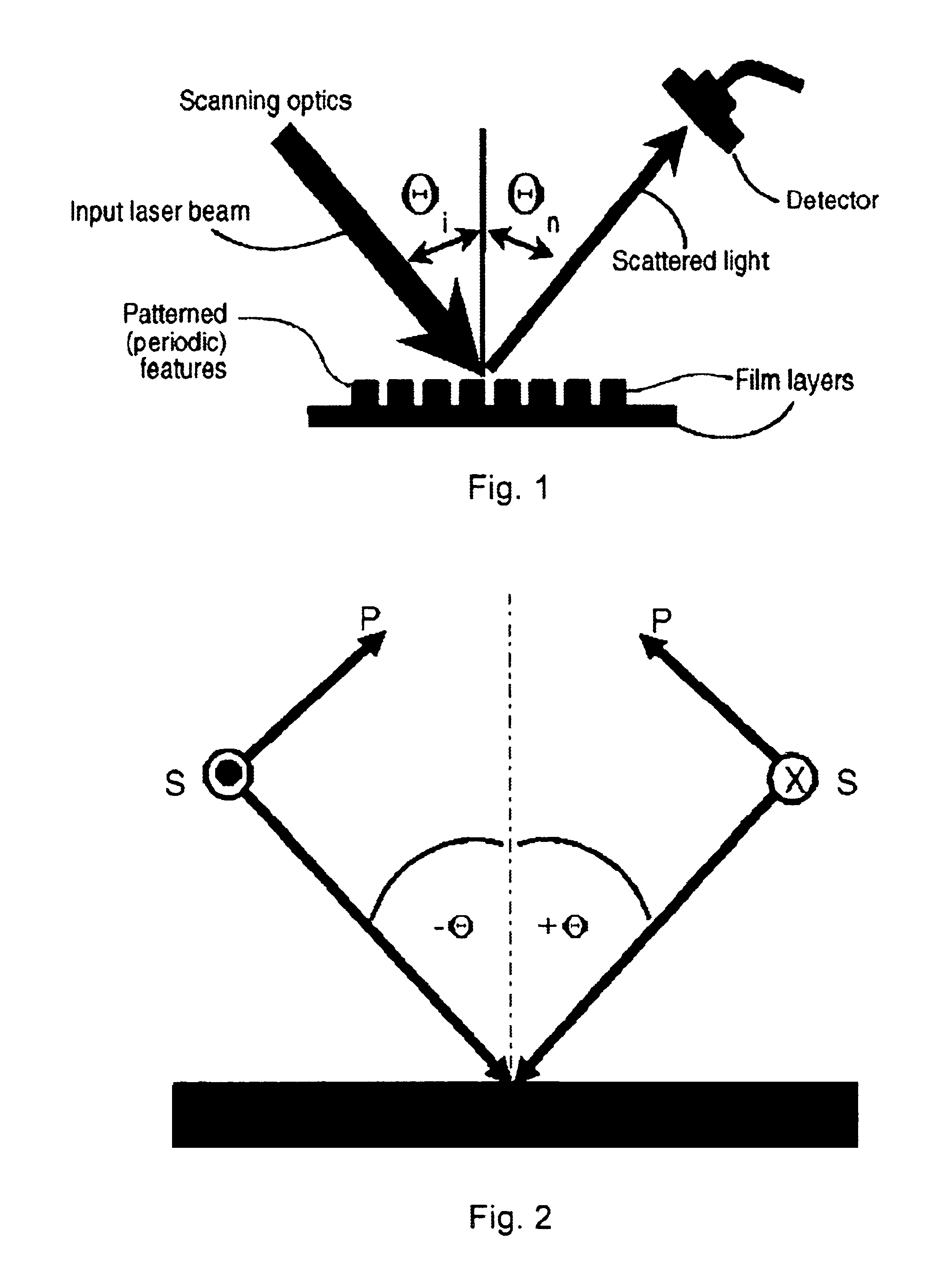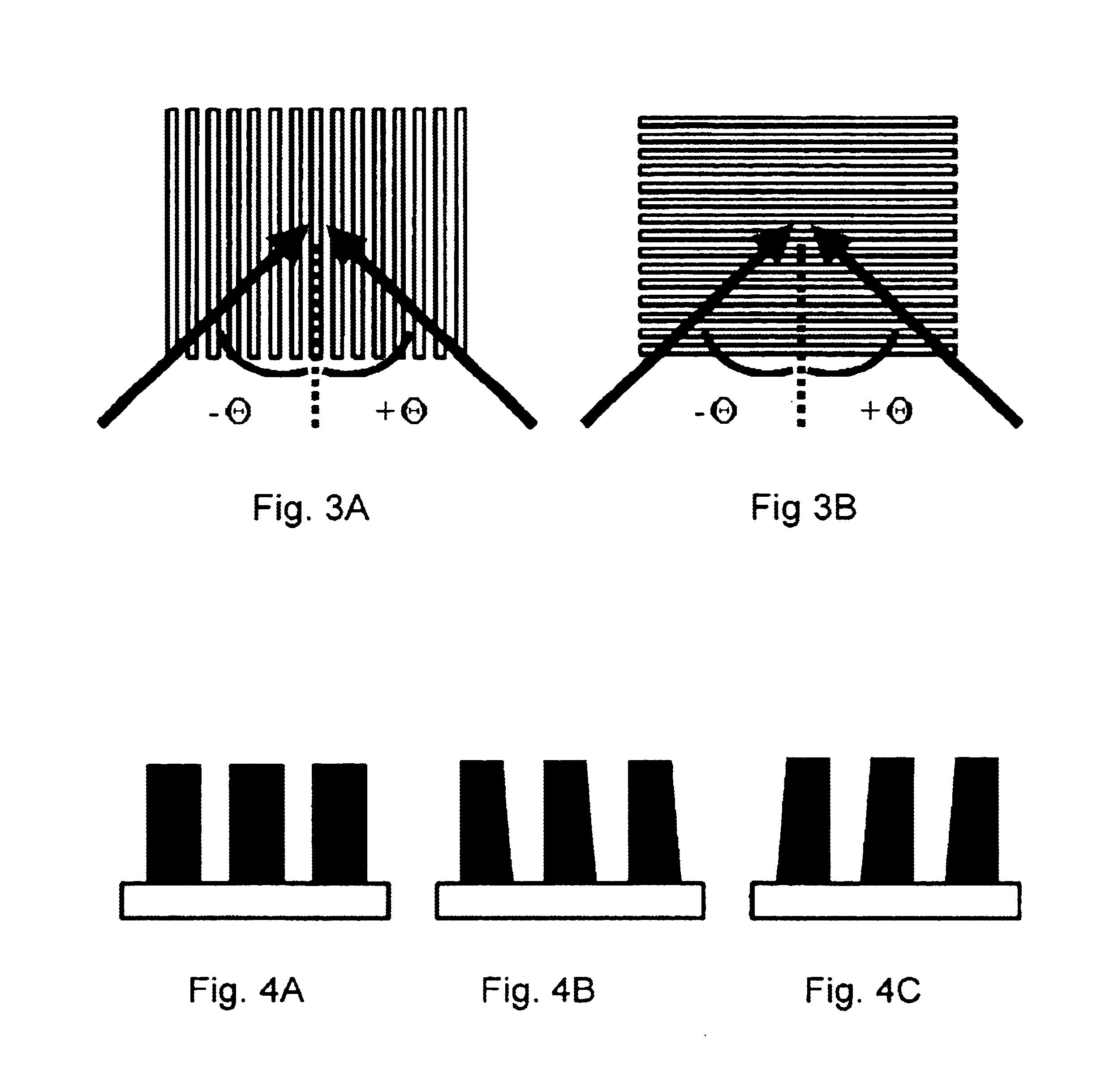Line profile asymmetry measurement using scatterometry
a scatterometry and line profile technology, applied in the direction of semiconductor/solid-state device testing/measurement, instruments, photomechanical equipment, etc., can solve the problems of complex process for the fabrication of microelectronic devices, device integrity or functionality may also be compromised, and the device may not function at all
- Summary
- Abstract
- Description
- Claims
- Application Information
AI Technical Summary
Problems solved by technology
Method used
Image
Examples
example 1
Photoresist Lines on Metal Substrate
The linewidths for this sample set were nominal 250 nm in width. The stack composition, from the top down, was comprised of the patterned photoresist on ARC on a TiN layer, followed by a thick AlCu layer (this effectively acted as the substrate).
The raw signatures from this sample set showed a good deal of asymmetry. FIG. 6 depicts one signature from this data set with the positive and negative halves of the angular scan superimposed (‘mirrored’) on top of one another. Clearly, as the figure illustrates, the two halves are not the same. In fact, they differ at some angles by more than 5% in terms of reflectivity, and the structure of the signature differs at some angles as well. Because the measurements were made in the conical grating orientation, this is a sign of profile asymmetry.
The raw signatures from this data set matched well to the model. Sidewall angle results from these wafer measurements can be seen in FIG. 7. Recall that the library a...
example 2
Etched Poly-Si Lines
The linewidths for this sample set ranged from 150 to 300 nm. The stack was comprised of patterned (etched) poly-Si on oxide on Si substrate. The raw signatures from this sample set showed a slight amount of asymmetry when measured in the conical configuration. FIG. 8 depicts one such signature with both the positive and negative halves of the signature ‘mirrored’ to illustrate this asymmetry.
In order to draw comparisons, the wafer used for these scatterometry measurements was cross-sectioned and measured by a SEM to determine the sidewall angles of the lines. FIG. 9 shows the results of comparing the left and right sidewall angle measurements of the two technologies. As the figure illustrates, both tools are reporting some degree of sidewall asymmetry, with the left wall angle being generally smaller. Furthermore, the sidewall angle correlation between the two techniques is good and shows similar trending from site to site.
example 3
193 nm Photoresist Lines
The last sample set investigated was a single wafer of 193 nm photoresist lines printed on a BARC layer, a poly layer, an oxide layer and a silicon substrate. The nominal feature sizes on this wafer were 180 nm lines.
For this wafer, the signature data was only mildly asymmetric when measured in conical mode. FIG. 10 depicts the S and P polarizations for one of these signatures ‘mirrored’ back upon itself. In contrast to the signature asymmetries observed from the previous samples, this asymmetry was relatively weak.
The left and right wall angle data for one row from this wafer can be seen in FIG. 11. Included on the plots in this figure are measurements made on the same sites with an AFM. Both measurement technologies agree well in terms of the overall magnitude of the wall angles. The AFM data shows more asymmetric measurements but are generally consistent with the data from the scatterometer. A comparison of the CD measurements obtained by the scatterometer...
PUM
| Property | Measurement | Unit |
|---|---|---|
| angles | aaaaa | aaaaa |
| wall angles | aaaaa | aaaaa |
| wall angle | aaaaa | aaaaa |
Abstract
Description
Claims
Application Information
 Login to View More
Login to View More - R&D
- Intellectual Property
- Life Sciences
- Materials
- Tech Scout
- Unparalleled Data Quality
- Higher Quality Content
- 60% Fewer Hallucinations
Browse by: Latest US Patents, China's latest patents, Technical Efficacy Thesaurus, Application Domain, Technology Topic, Popular Technical Reports.
© 2025 PatSnap. All rights reserved.Legal|Privacy policy|Modern Slavery Act Transparency Statement|Sitemap|About US| Contact US: help@patsnap.com



